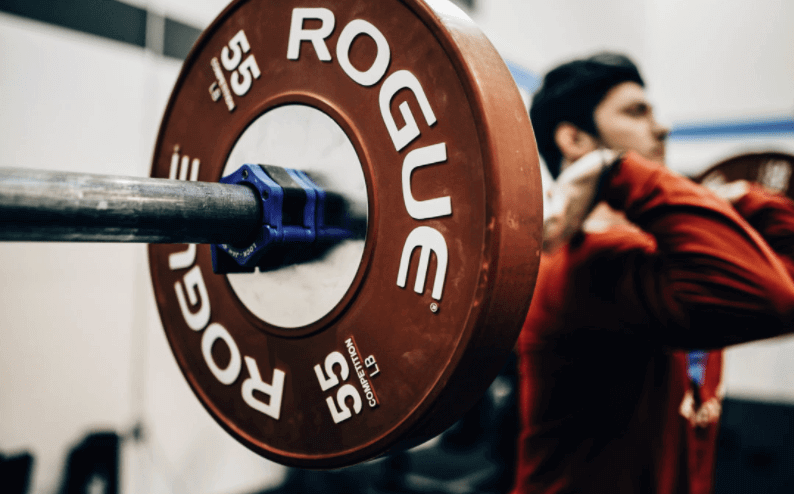I’ve heard a TON of really inspirational transformation stories. My response has usually been some version of “nice work… you should be so proud of yourself!” Two years ago, I changed my approach to ask “what was the thing that finally made it stick?”
After diving deep into the psychology of behavior change, I learned that most adults will go through four to five attempts to lose weight or “get fit” before they settle into the thing that works.
Personally, I’m incredibly grateful for my weight loss occurring at a fairly young age — I got serious about it at 13 years old. I was pretty overweight, got made fun of a lot (low hanging fruit when your first name rhymes with “fat”), and I had no concept of what a healthy meal looked like. I’ll never forget the day a teacher mentioned that he was giving up soda to lose weight. I never had another Coca Cola after that day.
Life was easier then. Aside from showing up to school, doing my chores, and practicing music my responsibilities were pretty much nonexistent. Combine that with a new interest in girls and constant jabbing from my peers and you have a pretty simple recipe for behavior change. All the motivation was there even though much it was negative. Compared to most of my peers, I was given the gift of learning to say “no” to treats and “yes” to exercise two decades ahead of time.
Behavior change as an adult is a much harder endeavor. We’re talking about re-wiring decades of stimulus-response mechanisms with all the responsibilities and stressors of adulthood compounded with a media barrage telling us there’s a “secret” that we just don’t know about yet. Here’s the real secret: there is none.
Here are the three characteristics I’ve discovered by asking folks just like you “what was the thing that made it stick?”
1. They take the long view
Warren Buffett famously said about investing “be fearful when others are greedy and greedy when others are fearful.” To use a recent example, the time to buy bitcoin was when everyone was afraid to buy bitcoin. Or, the time to pull your money out of real estate investment was when people were saying “this is going to increase in value forever!!!”
What does this have to do with weight loss?
In my example of losing weight at 13 years old, I had very important (to a 13 year-old boy) consequences staring me in the face every day — I wanted a girlfriend and to not be made fun of for being overweight.
As an adult, these consequences may not be as immediate or in-your-face from external sources. You probably have health insurance from your company. You probably have a car and a bed and a cell phone. You actually don’t need to be fit.
Until you do.
The consequences of ignoring your health and well-being won’t be felt for 10, 20, or 30 years. If you’re experiencing a medical consequence due to poor nutrition and lack of movement, the preceding actions occurred decades ago.
2. They never say “I’m too busy.”
“I don’t have the time…” is an interesting thought. It’s one of the only objective measures that has vastly different feelings associated with it. I really started to notice this phenomenon at the gym. From students to surgeons, attorneys to bartenders — everyone is busy. But, objectively, are they all? That can’t be the case, can it? If one person starts their day at 4:30am and works until 6pm, they’re definitely busier than someone who works 8am-5pm aren’t they?
But the feelings are the same.
People who are successful at anything — not just weight loss — have a different feeling about time. They prioritize things that are important long-term despite how their schedule may feel. They know that they’ll never find time, so they prioritize time.
In the case of weight loss and fitness, prioritizing that time actually has a scientifically-proven benefit to your work and productivity. So you’re killing two birds with the same stone; by investing time you’re actually creating more of it.
3. They settle into discomfort
I’m not talking about SEAL training “Hell Week” discomfort here. It’s more of a low-grade doing the right thing when it doesn’t feel great discomfort. Things like:
- Packing a lunch the night before
- Getting a gym bag ready the night before
- Working out early in the morning if your afternoon gets busy at work
- Pushing yourself just a touch harder in your workouts
It’s nothing crazy, but it does require a crazy level of consistency. The average time it took all those people who lost over fifty pounds was nine months! These folks weren’t living in a monastery eating celery and drinking water. But they did all the small things to set themselves up for success.
It won’t feel pleasurable but it will feel good
The folks who make big transformations have — either consciously or subconsciously — settled into the idea that something doesn’t have to feel good in order for it to be rewarding. They’ve learned to separate pleasure from happiness. They don’t deprive themselves of pleasure because this is an amazing part of being human. They enjoy cupcakes because cupcakes are delicious and pleasurable, not because cupcakes are a way to feel happy. Lasting happiness comes from accomplishment. Think about all of your greatest accomplishments — they probably had more moments of discomfort than pleasure.










